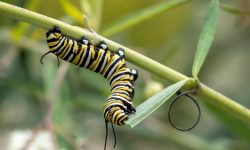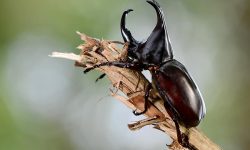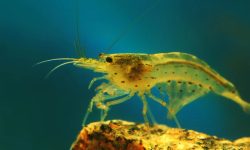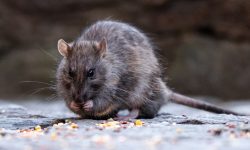Wild turkeys are some of the most adaptable birds in North America, thriving in forests, grasslands, farmlands, and even suburban edges. Their diet is surprisingly diverse, shifting constantly with the seasons and the habitat they occupy. Understanding what wild turkeys eat helps explain how they survive harsh winters, raise strong poults, and maintain balanced ecosystems.
These birds are opportunistic feeders, meaning they eat whatever nature provides at any given moment. Their sharp eyesight and excellent foraging skills allow them to search the ground, shrubs, and low branches for edible plants and insects. This flexibility gives wild turkeys an advantage over more specialized species.
In this detailed guide, you’ll explore exactly what wild turkeys eat, how their diet changes throughout the year, and the 20 foods they love the most in the wild. Each food item below is explained clearly with short, ad-friendly paragraphs to maximize readability and SEO.
Understanding the Wild Turkey Diet

Wild turkeys are natural omnivores with a diet that blends plants, seeds, insects, fruits, and small animals. Their digestive system is highly efficient at breaking down fibrous vegetation and tough seeds, thanks to their muscular gizzard that grinds food using small stones or grit.
Turkeys rely on seasonal abundance. In spring and summer, insects and fresh greens dominate their diet because they need high protein for growth and reproduction. During fall and winter, they switch to nuts, seeds, and berries to gain body fat and preserve energy when food becomes limited.
Hydration comes mostly through dew-covered vegetation, fresh plants, and insects. Turkeys do drink directly from ponds or shallow water sources, but they can survive long periods without standing water if enough moisture is present in their food.
20 Foods Wild Turkeys Love the Most
1. Acorns
Acorns are one of the most essential foods for wild turkeys, especially during autumn when oak forests release heavy mast crops. These nutrient-packed nuts provide fats, oils, and slow-burning energy needed for winter survival.
Turkeys scratch vigorously through thick leaf litter to expose buried acorns, often feeding in groups during peak mast seasons. Their strong beaks allow them to crack even smaller hard acorns with ease.
In years with abundant acorn production, turkey flocks grow stronger, reproduction improves, and overall survival rates increase significantly.
2. Seeds
Seeds from grasses, herbaceous plants, and shrubs make up a large portion of a turkey’s everyday diet. They’re abundant, lightweight to digest, and available even in harsh weather.
During winter, when insects vanish and fresh greens decline, seeds become a reliable energy source. Turkeys forage along field edges, open meadows, and wooded trails where seed-bearing plants thrive.
This constant access to seeds allows wild turkeys to maintain stamina throughout the colder months.
3. Insects
Insects supply vital protein for wild turkeys, especially growing poults that rely on insects almost exclusively for their first weeks of life. Beetles, grasshoppers, crickets, caterpillars, and spiders are among their favorites.
When spring arrives, insect populations explode, offering protein needed for feather growth, muscle development, and overall vitality. Adults also increase their insect intake during mating and nesting seasons.
Turkeys spend hours flipping leaves and scratching through grass to uncover hidden insect clusters.
4. Berries
Wild berries such as blueberries, blackberries, elderberries, and raspberries provide natural sugars and hydration during warm months. These fruits help turkeys stay energized while roaming across wide territories.
Turkeys forage berry patches heavily during summer, consuming both ripe and fallen fruits. Their digestive system handles berry seeds easily, dispersing them across the landscape.
In dense berry thickets, turkeys also find natural shelter from predators.
5. Grasses
Fresh grasses and young shoots are a dependable source of fiber, moisture, and gentle nutrients. Turkeys graze on tender grass blade tips, especially after rainfall.
Grass consumption peaks in spring when shoots are soft and abundant. This helps turkeys balance their protein-rich diet during insect season.
Grasses also aid digestion by helping regulate gut movement.
6. Agricultural Crops
Wild turkeys frequently raid crop fields to feast on leftover grains such as corn, soybeans, wheat, and oats. These calorie-dense foods help them gain weight quickly.
After harvest season, crop residues scatter across fields, creating effortless feeding opportunities. Turkeys often visit at dawn or dusk when farmland is quiet.
These nutrient-packed grains significantly improve turkey body condition during fall and winter.
7. Nuts
Beechnuts, hickory nuts, and pecans serve as excellent fat-rich foods when available. Turkeys crush smaller nuts with their beaks or swallow them whole to grind later in the gizzard.
Nut-filled forests create ideal habitats where turkeys return repeatedly to feed. These nuts offer sustained energy required for flight, roaming, and winter survival.
Their nutritional density makes nuts an important seasonal resource.
8. Leaves and Shoots
Young leaves, soft stems, and tender shoots provide moisture and minerals during warm months. Turkeys browse low shrubs and sapling branches for these fresh greens.
Leaves help balance the diet with fiber and micronutrients. They’re particularly important in late spring when insect numbers fluctuate.
These greens are easy to digest, even for young turkeys still learning to forage.
9. Ferns
Ferns flourish in moist woodlands, offering tender fronds that are easy for turkeys to consume. They provide hydration and light nutrients during rainy seasons.
Turkeys often feed in fern-covered areas because the dense vegetation doubles as protective cover. Ferns appear reliably during spring and early summer.
These soft greens help turkeys stay hydrated in humid forests.
10. Small Reptiles
On rare occasions, wild turkeys eat small reptiles like baby lizards or young snakes. These protein-rich prey items supplement their diet when insects are scarce.
Reptile feeding usually occurs during hot months when reptiles are active and easier to catch. Young turkeys may practice hunting movements with small, slow reptiles.
Although uncommon, this opportunistic behavior showcases their dietary flexibility.
11. Grasshoppers
Grasshoppers are a highly nutritious summer food, offering a big boost of protein that supports feather molting and rapid growth.
Turkeys chase grasshoppers across meadows, capturing them with sharp pecks. Young poults in particular depend on grasshoppers due to their soft, digestible bodies.
These insects are abundant, making them an easy seasonal favorite.
12. Snails
Snails provide calcium, moisture, and trace minerals. Hens especially benefit from calcium-rich foods when preparing for nesting season.
Turkeys search for snails in damp soil, under fallen logs, or after rainfall. Their digestive system softens the shells, making them safe and nutritious to consume.
Snails also offer hydration during dry spells.
13. Earthworms
Earthworms supply protein and water, making them valuable during wet weather. Turkeys uncover worms by scratching through moist soil and leaf litter.
Young birds learn to hunt worms early because they’re slow-moving and easy to capture. Worm-rich areas become feeding hotspots after heavy rains.
Earthworms help sustain turkeys through seasonal food changes.
14. Roots
Roots and tubers act as survival foods during winter when the ground vegetation disappears. These underground plant parts store concentrated carbohydrates.
Turkeys dig shallow holes to access roots hidden beneath snow or frozen soil. Though not their preferred choice, roots keep them nourished when cold conditions limit other foods.
Roots are especially important for older birds maintaining body weight.
15. Wild Grapes
Wild grapes provide quick sugars and antioxidants essential for late-summer energy. Turkeys pluck grapes directly from vines or consume fallen ones on the ground.
Grapevines grow along forest edges and riverbanks, areas turkeys frequent for cover and shade. These vines produce fruit reliably year after year.
Grapes also support hydration during hot weather.
16. Clover
Clover leaves and blossoms are high in moisture and easy to digest. Turkeys graze on clover in fields, pastures, and meadow edges.
Clover is especially beneficial during dry months when water is limited. It provides hydration and mild nutrients without requiring long-distance foraging.
Turkey flocks often gather in large clover patches during early mornings.
17. Mushrooms
Wild mushrooms appear after rainfall and contain moisture, minerals, and trace nutrients. Turkeys instinctively avoid toxic varieties, choosing only safe species.
Mushrooms help fill nutritional gaps during transitional seasons like early fall. Their soft texture makes them easy to swallow and digest.
Forests that stay damp produce abundant mushrooms for turkeys to feed on.
18. Small Amphibians
Occasionally, turkeys eat tiny amphibians such as young frogs or small toads. These high-protein meals appear mostly during rainy seasons or near wetlands.
Turkeys catch amphibians opportunistically when they hop into open spaces or shallow puddles. This behavior is more common among younger birds.
Amphibians offer a fast, nutrient-rich snack when insects temporarily decline.
19. Weeds
Weeds like plantain, chickweed, and dandelion add vitamins, minerals, and fiber to a turkey’s diet. These plants grow rapidly in disturbed soils across fields and forest edges.
Turkeys forage weeds while scratching for insects or seeds, making them a convenient supplemental food. Their digestive system handles diverse greens easily.
These weeds help strengthen turkey digestion during demanding seasons.
20. Tree Buds
Tree buds become essential winter foods when snow covers the forest floor. Buds store nutrients for spring growth, making them valuable snacks.
Turkeys reach low branches to pluck tender buds when ground foods are limited. Buds give them early-season nourishment before new grasses emerge.
This feeding strategy is vital for surviving late-winter scarcity.
FAQs About What Do Wild Turkeys Eat
Do wild turkeys mainly eat plants or animals?
Wild turkeys are omnivores, but their diet is mostly plant-based. They eat seeds, grasses, nuts, berries, and add insects or small animals when protein is needed.
What do baby wild turkeys eat in the wild?
Poults depend heavily on insects such as beetles, grasshoppers, and caterpillars. These protein-rich foods help them grow strong during their first few weeks.
Do wild turkeys eat corn from farms?
Yes. Wild turkeys frequently forage spilled or leftover corn in crop fields. Corn gives them quick energy, especially in fall and winter.
How do wild turkeys find food during winter?
They scratch through snow or leaf litter to find nuts, seeds, and roots. Tree buds also become an important part of their winter diet.
Do wild turkeys need to drink water daily?
Turkeys drink when water sources are available, but they get most of their hydration from dew, fresh plants, insects, and berries.
Final Thoughts
Wild turkeys are incredibly versatile feeders, capable of surviving in diverse habitats through every season. Their wide-ranging diet gives them adaptability, resilience, and the ability to thrive even when conditions are harsh. By understanding what wild turkeys eat, we gain insight into their behavior, survival strategies, and the important ecological roles they play in North American landscapes.






